COVID-19: TCTMD’s Daily Dispatch for March Week 5
We’re curating a list of COVID-19 research and other useful content, and updating it daily.

TCTMD reporter Todd Neale is keeping up on breaking news and peer-reviewed research related to COVID-19 and will update daily. If you have something to share, tell us. All of our COVID-19 coverage can be found on our COVID-19 Hub.
April 2, 2021
 A large meta-analysis provides yet more evidence that ACE inhibitors and angiotensin receptor blockers (ARBs) pose no harm to patients with COVID-19 and may even be associated with protective benefits, particularly in patients with hypertension. Senior investigator Vassilios Vassiliou, MBBS, PhD, told TCTMD’s Michael O’Riordan: “I hope it reassures everybody and we can draw a line and say, ‘There are absolutely no concerns about ACE inhibitors or ARBs. If you have been prescribed these medications, you should carry on taking them.’”
A large meta-analysis provides yet more evidence that ACE inhibitors and angiotensin receptor blockers (ARBs) pose no harm to patients with COVID-19 and may even be associated with protective benefits, particularly in patients with hypertension. Senior investigator Vassilios Vassiliou, MBBS, PhD, told TCTMD’s Michael O’Riordan: “I hope it reassures everybody and we can draw a line and say, ‘There are absolutely no concerns about ACE inhibitors or ARBs. If you have been prescribed these medications, you should carry on taking them.’”
Health Canada has approved the import and administration of 1.5 million doses of the AstraZeneca vaccine on loan from the United States and made at a US manufacturing site, after health officials inspected both the batch and the site. The Oxford/AstraZeneca vaccine has not yet been cleared or authorized in the United States; in Canada, the government has restricted its use to adults over age 55.
Meanwhile, reports of blood clots with the AstraZeneca vaccine continue to accrue—this time in Britain, where regulators have announced an additional 25 cases. This brings the total to 30 incidents out of 18.1 million AstraZeneca shots given in that country as of March 24, the New York Times reports. “The key thing to remember is how rare these brain clots are, and how powerful the proven benefit of vaccination is against COVID,” David Werring, PhD, a professor at University College London’s Institute of Neurology, is quoted in the story.
The World Health Organization (WHO) is warning that Brazil faces a “very serious situation.” A long-time epicenter for the pandemic, Brazil is now seeing “a number of states in critical condition,” with many hospital ICUs over 90% full, Reuters reports.
The WHO is also reviewing data presented by Chinese vaccine companies Sinopharm and Sinovac showing “levels of efficacy that would be compatible with those required by the WHO,” according to the chair of the organization’s vaccine advisory panel. Those levels are just 50% for efficacy and preferably close to or above 70%, a Reuters article notes.
Italian Prime Minister Mario Draghi has decreed that all healthcare workers must be vaccinated, allowing hospital employers to suspend without pay any workers who refuse to do so, the New York Times reports. “It is absolutely not OK that unvaccinated workers are in contact with the sick,” Draghi is quoted as saying at a news conference last week, where he announced his government’s plans to “intervene.”
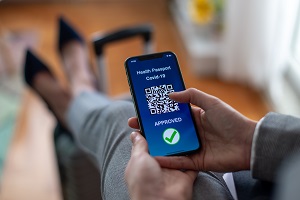 Vaccine passports have been a popular notion among those keen to get back to safe travel and “normal” life, and as we’ve reported previously in the Dispatch, the European Union is pushing ahead with a “digital green certificate” that would allow citizens to move more freely between countries. The BBC recently reviewed what different countries are doing, but as a STAT story explores, the idea is not gaining universal traction in the United States. It represents a “slippery slope,” Georges Benjamin, the executive director of the American Public Health Association, is quoted in the story, which points out it “could politicize the vaccine rollout, make health inequities worse, and even lull vaccinated people into a false sense of security.”
Vaccine passports have been a popular notion among those keen to get back to safe travel and “normal” life, and as we’ve reported previously in the Dispatch, the European Union is pushing ahead with a “digital green certificate” that would allow citizens to move more freely between countries. The BBC recently reviewed what different countries are doing, but as a STAT story explores, the idea is not gaining universal traction in the United States. It represents a “slippery slope,” Georges Benjamin, the executive director of the American Public Health Association, is quoted in the story, which points out it “could politicize the vaccine rollout, make health inequities worse, and even lull vaccinated people into a false sense of security.”
A perspective in the New England Journal of Medicine lays out the policy and ethical considerations a vaccine passport certification process would need to navigate.
A JAMA Insights review makes the case for universal mask mandates and restricting on-premises dining for reducing community transmissions and deaths. “The goal is to control the COVID-19 pandemic as quickly as possible, to save lives, to help people get back to school and work safely, and to return to the many things they enjoy, such as eating at restaurants,” write Gery P. Guy Jr, PhD, MPH, and colleagues. “These prevention practices done well by everyone, together with the vaccine scale-up, can help end this pandemic.”
Lung transplantation may be the “only option for survival” in people with severe, unresolving COVID-19 associated acute respiratory distress syndrome (ARDS), write the authors of four-country case report in the Lancet Respiratory Medicine. In their series of 12 patients who underwent transplantation between May and September 2020, all were able to wean off of extracorporeal support, had no recurrence of SARS-CoV-2 in their allografts, and showed short-term survival similar to transplanted subjects without COVID-19.
A mathematical modelling study published in the Lancet Infectious Diseases tackles a difficult question for public health authorities: who should be prioritized for COVID-19 vaccination? The answer, its authors say, depends on the time course of the pandemic in any given population. “For later vaccination start dates,” they argue—provocatively—“use of SARS-CoV-2 vaccines to interrupt transmission might prevent more deaths than prioritizing vulnerable age groups.”
 Despite the disproportionate levels of COVID-19 experienced by incarcerated Americans during the pandemic, a survey of three prisons and 13 jails across four US states suggests that fewer than half would be willing to get a vaccine, researchers report in Morbidity and Mortality Weekly Report. “This report underscores the urgent need for interventions that are culturally relevant and appropriate for various health literacy levels to increase vaccine confidence among incarcerated or detained persons,” researchers conclude.
Despite the disproportionate levels of COVID-19 experienced by incarcerated Americans during the pandemic, a survey of three prisons and 13 jails across four US states suggests that fewer than half would be willing to get a vaccine, researchers report in Morbidity and Mortality Weekly Report. “This report underscores the urgent need for interventions that are culturally relevant and appropriate for various health literacy levels to increase vaccine confidence among incarcerated or detained persons,” researchers conclude.
TCTMD managing editor Shelley Wood contributed today’s Dispatch.
April 1, 2021
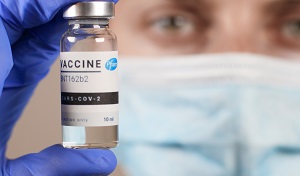 Citing topline results from their ongoing analysis of phase III clinical trial results, Pfizer/BioNtech says their vaccine is 91.3% effective against contracting COVID-19, and says it’s 100% effective against severe COVID-19 using the Centers for Disease Control and Prevention (CDC) definition and 95.3% effective according to the Food and Drug Administration (FDA) definition. Investigators have seen 927 confirmed symptomatic cases of COVID-19: 850 in the placebo group and 77 in the vaccine group among 46,307 randomized trial participants. No serious side effects have been observed 6 months after the second dose. The data, released in a media statement, have not been peer-reviewed.
Citing topline results from their ongoing analysis of phase III clinical trial results, Pfizer/BioNtech says their vaccine is 91.3% effective against contracting COVID-19, and says it’s 100% effective against severe COVID-19 using the Centers for Disease Control and Prevention (CDC) definition and 95.3% effective according to the Food and Drug Administration (FDA) definition. Investigators have seen 927 confirmed symptomatic cases of COVID-19: 850 in the placebo group and 77 in the vaccine group among 46,307 randomized trial participants. No serious side effects have been observed 6 months after the second dose. The data, released in a media statement, have not been peer-reviewed.
As expected, France has gone into a strict lockdown that will see French schools close for at least 3 weeks, President Emmanuel Macron announced last night. “All nonessential shops are to close from Saturday and there will be a ban on travelling more than 10 km (6 miles) from home without good reason,” the BBC reports. On Wednesday the country reported 59,038 new cases. “We will lose control if we don’t move now,” Macron said in a live broadcast to the nation.
Danish researchers have delved into the Danish National Patient Registry to identify cases of venous thromboembolism in the general adult population over the last 10 years up to and including the period in which with Oxford/AstraZeneca vaccine was rolling out. Writing in the Lancet, they cautiously conclude that though it is possible some venous thromboembolic events are being caused by vaccination, the reported number among people who received this vaccine “does not seem to be increased relative to the expected number estimated from incidence rates from the entire Danish population before the introduction of the vaccination program.”
Workers at a Johnson & Johnson vaccine manufacturing facility run by Emergent BioSolutions have “conflated” ingredients, thus ruining up to 15 million doses of the vaccine, the New York Times reports. “The mistake is a major embarrassment both for Johnson & Johnson, whose one-dose vaccine has been credited with speeding up the national immunization program, and for Emergent, its subcontractor, which has faced fierce criticism for its heavy lobbying for federal contracts, especially for the government’s emergency health stockpile,” the Times reports.
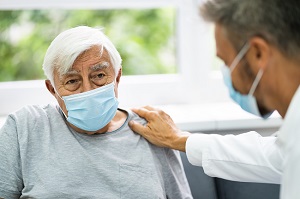 Almost one-third of people who were hospitalized for COVID-19 in the United Kingdom were rehospitalized within 4 months of being discharged and more than 10% died, according to a new analysis published in the BMJ. The study looked at a cohort of 47,780 subjects who’d been in the hospital for COVID-19 and discharged alive by August 31, 2020, matching them with subjects from a pool of about 50 million people in England. Readmissions and deaths in the COVID-19 group were four and eight times more common, respectively, than in controls.
Almost one-third of people who were hospitalized for COVID-19 in the United Kingdom were rehospitalized within 4 months of being discharged and more than 10% died, according to a new analysis published in the BMJ. The study looked at a cohort of 47,780 subjects who’d been in the hospital for COVID-19 and discharged alive by August 31, 2020, matching them with subjects from a pool of about 50 million people in England. Readmissions and deaths in the COVID-19 group were four and eight times more common, respectively, than in controls.
Also in the BMJ, a “living” review and meta-analysis summarizes the clinical trial evidence to date supporting or rejecting different drug treatments used in COVID-19. Spoiler: corticosteroids and interleukin-6 inhibitors get top marks for certain endpoints of interest, while janus kinase inhibitors “may” help and the impact of remdesivir is “uncertain.” Evidence for colchicine and ivermectin, though scant, is also reviewed, while azithromycin, hydroxychloroquine, lopinavir-ritonavir, and interferon-beta “do not appear to reduce risk of death or have any effect on any other patient-reported outcome.”’
A program dubbed SAFE @ HOME O2 Expected Practice piloted in California’s Los Angeles County reports that 621 patients with COVID-19 pneumonia who deemed stable but still in need of at least 3 liters per minute of nasal cannula oxygen were safely discharged with home oxygen systems. Writing in JAMA, researchers report that discharged patients had a low rate of mortality (1.3%) and just 8.5% needed to return to hospital, with no deaths occurring in the ambulatory setting or during transit back to hospital. The approach “may be considered part of a strategy to ensure right care, right place, and right time for patients with COVID-19 pneumonia, and to preserve acute care access during the pandemic,” they write.
#BREAKINGMEWS Move over, Rover - meet the newest member of our detection team! 🐾
— flyyow (@FlyYOW) April 1, 2021
Rusty is the first detector #cat and he specializes in sniffing out things that might be fishy. 🐟#YOW #AirportTwitter pic.twitter.com/2gt8h4k0Pl
For the second year in a row, Google has pressed pause on its tradition of having an April Fools’ prank or doodle on its home page. According to an internal message obtained by Business Insider, Google’s VP of global marketing, Marvin Chow, told employees: “With much of the world still grappling with serious challenges, we feel we should again pause the jokes for April Fools’ Day this year.”
If anyone is still seeking levity today (and who isn’t), there is #breakingmews out of Canada’s capital city, where the airport has employed its first sniffer cat. According to the Ottawa Citizen, Rusty, “tasked with sniffing out things that might be fishy,” is surely capable of detecting COVID-19 quarantine-dodgers slipping over the border.
TCTMD managing editor Shelley Wood contributed today’s Dispatch
March 31, 2021
 Topline results from Pfizer/BioNTech’s adolescent vaccine trial, announced today, show that participants age 12-15 had “robust antibody responses” exceeding those seen in the pivotal trial of older teens and young adults up to age 25, with no major adverse events reported. Among 2,260 adolescents enrolled, 18 COVID-19 cases occurred among the 1,129 in the placebo group as compared with zero in the vaccinated teens. Side effects were “generally consistent” with those seen in earlier studies of older subjects.
Topline results from Pfizer/BioNTech’s adolescent vaccine trial, announced today, show that participants age 12-15 had “robust antibody responses” exceeding those seen in the pivotal trial of older teens and young adults up to age 25, with no major adverse events reported. Among 2,260 adolescents enrolled, 18 COVID-19 cases occurred among the 1,129 in the placebo group as compared with zero in the vaccinated teens. Side effects were “generally consistent” with those seen in earlier studies of older subjects.
An editorial in the New York Times penned by Jeremy Samuel Faust, MD, and Angela Rasmussen, MD, explains why “we can’t end the pandemic without vaccinating kids.” Though children and young people got off lightly in the first year of the pandemic, that’s by no means guaranteed if the virus continues to spread symptomatically, the editorial stresses.
In France, President Emmanuel Macron is scheduled to address the country this evening and is expected to propose sweeping countrywide restrictions in an effort to curb the runaway third wave there. Parliament will then vote Thursday on whether to adopt the measures at a national level. “Daily new infections have doubled since February to nearly 40,000,” Reuters reports. “On Tuesday, the number of COVID-19 patients in intensive care breached 5,000, exceeding the peak hit during a 6-week-long lockdown in the autumn.”
In vitro studies of the AstraZeneca vaccine have demonstrated reduced neutralization activity against the B.1.1.7 (UK) variant as compared with its efficacy against the original SARS-CoV-2 variant, with an efficacy of 70% against symptomatic infection (as compared with 81.5% for the original lineage), researchers report in the Lancet.
The European Medicines Agency (EMA) is still in meetings to review the risk of blood clots with AstraZeneca’s vaccine. “At present the review has not identified any specific risk factors, such as age, gender, or a previous medical history of clotting disorders, for these very rare events,” a press release notes. “A causal link with the vaccine is not proven, but is possible and further analysis is continuing.” The meeting convened Monday, and its updated recommendations are expected between April 6-9.
 More than 375,000 deaths during 2020 were attributed to COVID-19 according to death certificates reported to the US Centers for Disease Control and Prevention. But more than 5% of these listed COVID-19 without any other cause of death listed, and 97% had a “co-occurring diagnosis” suggesting a plausible chain-of-event condition such as pneumonia or respiratory failure, or listed a significant contributing condition such as hypertension or diabetes, or both. “High-quality documentation of death certificate diagnoses is essential for an authoritative public record,” authors write in Morbidity and Mortality Weekly Report.
More than 375,000 deaths during 2020 were attributed to COVID-19 according to death certificates reported to the US Centers for Disease Control and Prevention. But more than 5% of these listed COVID-19 without any other cause of death listed, and 97% had a “co-occurring diagnosis” suggesting a plausible chain-of-event condition such as pneumonia or respiratory failure, or listed a significant contributing condition such as hypertension or diabetes, or both. “High-quality documentation of death certificate diagnoses is essential for an authoritative public record,” authors write in Morbidity and Mortality Weekly Report.
A survey of 5,910 US adults (mean age 52) with comorbid conditions putting them at higher risk for severe COVID-19 indicates that for seven of nine risk factors, subjects had a higher perceived chance of complications if infected as compared with people who lacked the condition. Having more comorbid conditions increased the likelihood that people would perceive themselves as being higher risk. But even among adults with at least three of the conditions, regular mask use when visiting a friend’s home or when hosting at their own was just 11% and 9%, respectively. The findings underscore “the need to better identify how individuals understand the risks and potential benefits of this nonpharmacologic intervention and to translate this knowledge into effective efforts to increase consistent mask wearing in all settings where risk of exposure may be elevated,” researchers write in JAMA Network Open.
On the Heart Sounds podcast this month, Francesca Torriani, MD, and Ori Ben-Yehuda, MD, discuss COVID-19 vaccine hesitancy and offer some tips and information for physicians seeking to assuage patient fears.
Up to 400 million doses of Johnson & Johnson’s single-dose vaccine will be made available to the 55 countries in the African Union, the company announced. Delivery of 220 million doses will begin by the third quarter of 2021; the African Union has the option of ordering an additional 180 million doses through 2022.
 “From academic research centers to intensive care units (ICUs) to scientific journals to government agencies, scientists fighting the pandemic say they are hitting a wall,” Meredith Wadman writes in Science. The ferocious generation of knowledge and science has been unprecedented, say many—but the pace of these accomplishments can’t be sustained. A free Physician Support Line, staffed by volunteer psychiatrists, has fielded 2,000 calls since launching last year, Wadman reports.
“From academic research centers to intensive care units (ICUs) to scientific journals to government agencies, scientists fighting the pandemic say they are hitting a wall,” Meredith Wadman writes in Science. The ferocious generation of knowledge and science has been unprecedented, say many—but the pace of these accomplishments can’t be sustained. A free Physician Support Line, staffed by volunteer psychiatrists, has fielded 2,000 calls since launching last year, Wadman reports.
TCTMD managing editor Shelley Wood contributed today’s Dispatch.
March 30, 2021
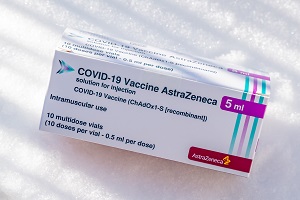 Canada and Germany have added new restrictions on the use of the AstraZeneca vaccine over clotting concerns. Last night, Canada’s national vaccine panel recommended that it not be used in people under age 55 “as a precautionary measure,” although no adverse events related to thrombosis, thrombocytopenia, or platelet count have been reported there. Germany announced it would not use the vaccine in people under age 60 and has convened an urgent meeting to review the country’s vaccine policy; the Paul Ehrlich Institute says that a total of 31 cases of abnormal clotting postvaccination have been reported as of March 29 in Germany, out of 2.7 million doses administered, the AP reports. All but two cases occurred in people age 20 to 63.
Canada and Germany have added new restrictions on the use of the AstraZeneca vaccine over clotting concerns. Last night, Canada’s national vaccine panel recommended that it not be used in people under age 55 “as a precautionary measure,” although no adverse events related to thrombosis, thrombocytopenia, or platelet count have been reported there. Germany announced it would not use the vaccine in people under age 60 and has convened an urgent meeting to review the country’s vaccine policy; the Paul Ehrlich Institute says that a total of 31 cases of abnormal clotting postvaccination have been reported as of March 29 in Germany, out of 2.7 million doses administered, the AP reports. All but two cases occurred in people age 20 to 63.
After weeks of declining infections and hospitalizations, the US is seeing cases on the rise across the country, mirroring the scenario seen in other parts of the world. The New York Times explores how rising variants are putting pressure on the vaccination push.
In a statement published in newspapers across the globe, the president of the European Union and the director of the World Health Organization (WHO), along with leaders more than 20 countries, propose an international treaty. “The main goal of this treaty would be to foster an all-of-government and all-of-society approach, strengthening national, regional, and global capacities and resilience to future pandemics. This includes greatly enhancing international cooperation to improve, for example, alert systems, data-sharing, research, and local, regional and global production, and distribution of medical and public health counter measures, such as vaccines, medicines, diagnostics, and personal protective equipment,” they explain. “Our solidarity in ensuring that the world is better prepared will be our legacy that protects our children and grandchildren and minimizes the impact of future pandemics on our economies and our societies.”
 In a Nature news feature, Dyani Lewis explains why indoor spaces remain COVID-19 hotspots: investing in better ventilation for schools, workplaces, prisons, and restaurants would go a long way in dampening case counts. Even a recently updated WHO document with advice for minimizing indoor transmissions falls short. “Yuguo Li, a building environment engineer at the University of Hong Kong, says that he is disappointed it took the WHO and other health authorities so long,” Lewis writes. “‘We would have saved a lot of people’ if airborne transmission was recognized earlier, he says.”
In a Nature news feature, Dyani Lewis explains why indoor spaces remain COVID-19 hotspots: investing in better ventilation for schools, workplaces, prisons, and restaurants would go a long way in dampening case counts. Even a recently updated WHO document with advice for minimizing indoor transmissions falls short. “Yuguo Li, a building environment engineer at the University of Hong Kong, says that he is disappointed it took the WHO and other health authorities so long,” Lewis writes. “‘We would have saved a lot of people’ if airborne transmission was recognized earlier, he says.”
In addition to protecting the person who receives them, vaccines have the potential to reduce viral load, possibly limiting the ability of an infected but vaccinated subject to pass along the disease. Published in Nature Medicine, a study demonstrates that inoculation with the Pfizer/BioNTech vaccine lead to “significantly reduced viral load” among individuals who tested positive 12 days or more after vaccination “potentially affecting viral shedding and contagiousness as well as the severity of the disease,” the authors write.
Too many hospitalized patients with COVID-19 are also getting antibiotics, and that’s a big problem write David Hyun, MD, and Rachel Zetts, MPH, in STAT. “In a study of nearly 6,000 hospital admissions between February and July 2020 among patients with COVID-19, at least one course of antibiotics was given to more than half (52%) during their hospital stays.”
A cross-sectional survey study addressing COVID-19 vaccination intentions among racially and ethnically health workers and members of the general population indicates that health workers are more likely than members of the public to say they plan to get vaccinated. But patterns of intentions were the same for both health workers and the general public in that Black, Latinx, and Asian respondents were significantly more likely to give reasons for not vaccinating and had less confidence that vaccination could prevent COVID-19. The full study appears today in JAMA Internal Medicine.
 The full 124-page WHO report, penned by 34 Chinese and international scientists on the origins of SARS-CoV-2, was formally released today after being leaked to the media yesterday. It “contains a glut of new detail but no profound new insights. And it does little to allay Western concerns about the role of the Chinese Communist Party, which is notoriously resistant to outside scrutiny,” a New York Times article summarizes.
The full 124-page WHO report, penned by 34 Chinese and international scientists on the origins of SARS-CoV-2, was formally released today after being leaked to the media yesterday. It “contains a glut of new detail but no profound new insights. And it does little to allay Western concerns about the role of the Chinese Communist Party, which is notoriously resistant to outside scrutiny,” a New York Times article summarizes.
TCTMD managing editor Shelley Wood contributed today’s Dispatch.
March 29, 2021
News reports from around the world paint a dire picture of COVID-19’s surging case counts.
Infections are spiking throughout the United States, prompting Centers for Disease Control and Prevention Director Rochelle Walensky to issue an “urgent plea” asking Americans to heed public health measures, STAT reports. “We have so much to look forward to, so much promise and potential of where we are and so much reason for hope, but right now I’m scared,” Walensky is quoted, adding that she has begun experiencing a “recurring” feeling of “impending doom.”
 In France, an op-ed penned by 41 ICU and emergency physicians in the Journal du Dimanche warns that Paris public hospital ICU beds will be over capacity within weeks as the virus surges there anew. The situation, they write, is worse than any of the terrorist attacks they’ve faced in recent years.
In France, an op-ed penned by 41 ICU and emergency physicians in the Journal du Dimanche warns that Paris public hospital ICU beds will be over capacity within weeks as the virus surges there anew. The situation, they write, is worse than any of the terrorist attacks they’ve faced in recent years.
In India, public health officials say that the country has experienced the highest daily coronavirus case numbers of the past 5 months, with overall cases surpassing 12 million for the first time, Reuters reports.
Mexican health authorities are acknowledging that the death toll there is likely over 300,000—at least 60% higher than the “confirmed” number.
In Pakistan, President Arif Alvi has tested positive for COVID-19 after receiving his first dose of the vaccine; the announcement comes after news that Pakistani Prime Minister Imran Khan also tested positive 2 days after receiving his first vaccine dose earlier this month. Officials concluded Khan had likely been infected prior to being vaccinated, Reuters reports, while Alvi is leveraging his positive test result to remind people that developing antibodies following vaccination takes time.
In the UK, where vaccines have rolled out much swifter than in neighboring countries, each of the four member nations are reporting case rates that have dropped to a 6-month low although there are signs they may be leveling off, the Guardian reports. Wales has the lowest rate at just 39.1 cases per 100,000 people recorded over a recent 7-day period.
As COVID numbers mount in many provinces, border officials in Canada say they have intercepted 30 travelers with “fraudulent” COVID-19 test results. Global News reports. People entering that country are required to provide proof of a negative test before entry.
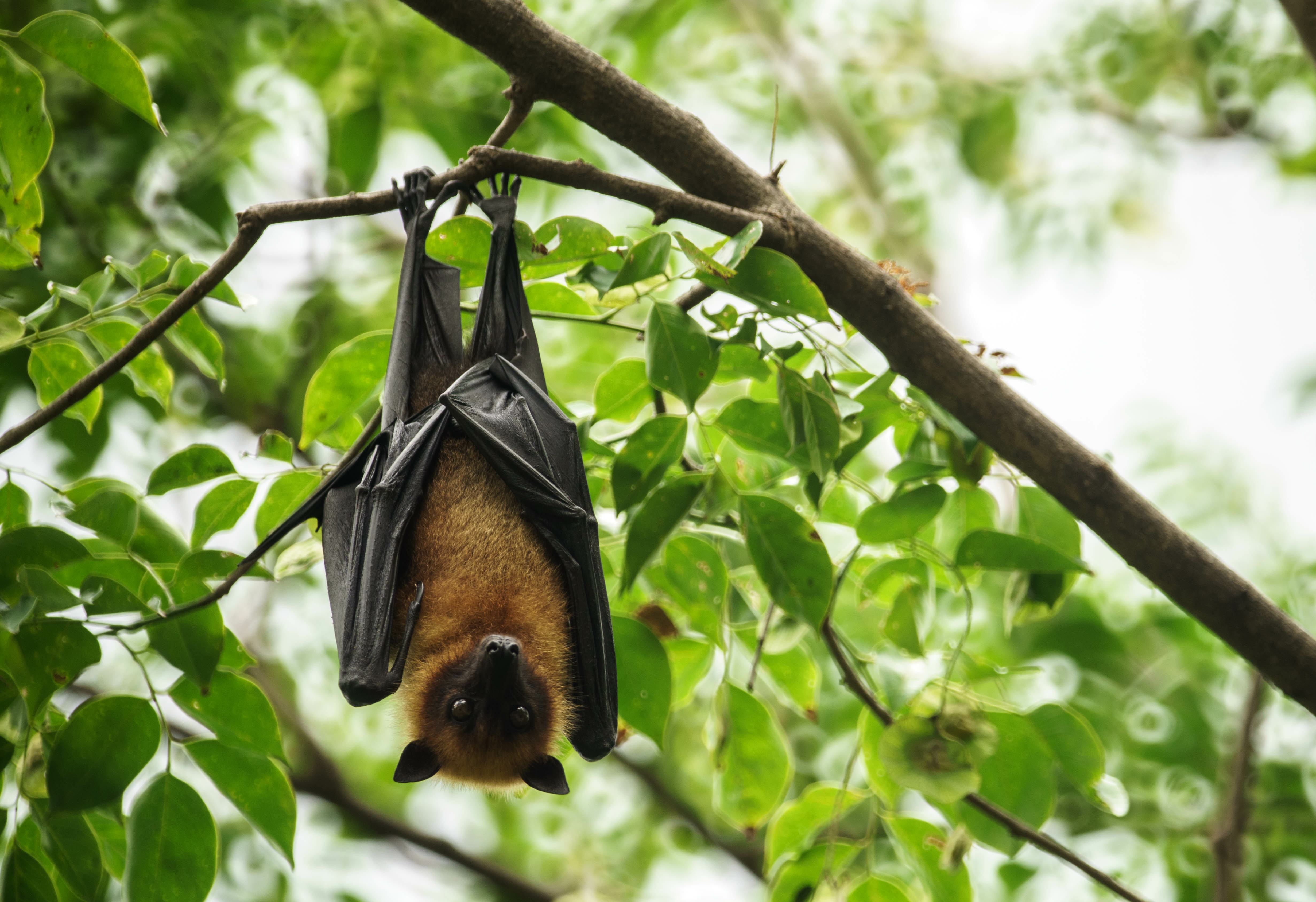 The long-awaited World Health Organization report on the origins of the SARS-CoV-2 virus concludes that it most likely emerged in bats before spreading to humans through another animal, the New York Times reports ahead of the document’s official release tomorrow. “A team of experts who recently visited the Chinese city of Wuhan, where the coronavirus was first detected in late 2019, also dismissed the idea that the virus might have leaked accidentally from a Chinese laboratory as ‘extremely unlikely,’” the article states.
The long-awaited World Health Organization report on the origins of the SARS-CoV-2 virus concludes that it most likely emerged in bats before spreading to humans through another animal, the New York Times reports ahead of the document’s official release tomorrow. “A team of experts who recently visited the Chinese city of Wuhan, where the coronavirus was first detected in late 2019, also dismissed the idea that the virus might have leaked accidentally from a Chinese laboratory as ‘extremely unlikely,’” the article states.
The European Respiratory Society has published new guidelines for the management of hospitalized patients with COVID-19. The Lancet Respiratory Medicine sums up the key recommendations made on the basis of evidence available at the cutoff date (February 20, 2021). These include a “strong” recommendation for the use of systemic corticosteroids for patients requiring supplementary oxygen, as well as anticoagulation for hospitalized patients. IL-6 receptor antagonists and high-flow nasal oxygen or CPAP get “conditional” recommendations. Hydroxychloroquine and lopinavir-ritonavir are strongly discouraged.
The rollercoaster ride for AstraZeneca’s vaccine continues following a publication posted to a preprint server proposing that the rare abnormal clotting and low platelet count seen in some patients who receive this vaccine are similar to heparin-induced thrombocytopenia and could be dubbed “vaccine-induced prothrombotic immune thrombocytopenia (VIPIT).” Andreas Greinacher, MD, and colleagues first announced their findings in a press release on March 21, 2021; they propose that a widely available screening test could be used to identify subjects likely to develop the side effect.
A COVID-19 Vaccine Forum co-hosted by the American College of Physicians (ACP) and Annals of Internal Medicine, covering “practical clinical considerations related to the COVID-19 vaccine including the impact of COVID-19 variants on vaccine efficacy, comparative effectiveness of the different vaccines, and postvaccine behavior recommendations,” has been posted online.
 An analysis of vaccine effectiveness with the two mRNA vaccines (Pfizer and Moderna) among eight different cohorts of healthcare personnel, first responders, and other essential and frontline workers indicates that these novel vaccines are 90% effective under real-world conditions at 14 or more days after the second dose. Fourteen or more days after a single dose, vaccine effectiveness was in the range of 80%, according to research published today in Morbidity and Mortality Weekly Report.
An analysis of vaccine effectiveness with the two mRNA vaccines (Pfizer and Moderna) among eight different cohorts of healthcare personnel, first responders, and other essential and frontline workers indicates that these novel vaccines are 90% effective under real-world conditions at 14 or more days after the second dose. Fourteen or more days after a single dose, vaccine effectiveness was in the range of 80%, according to research published today in Morbidity and Mortality Weekly Report.
In what many will hope is a sign of things to come, the Cardiovascular Research Foundation (which publishes TCTMD) announced that its annual TVT conference will be at least partly in-person in Miami this July, with a limited number of participants, strict public health measures, and a simultaneous live broadcast.
TCTMD managing editor Shelley Wood contributed today’s Dispatch.
Shelley Wood was the Editor-in-Chief of TCTMD and the Editorial Director at the Cardiovascular Research Foundation (CRF) from October 2015…
Read Full Bio

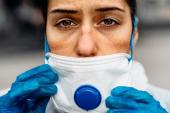

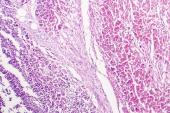
Comments